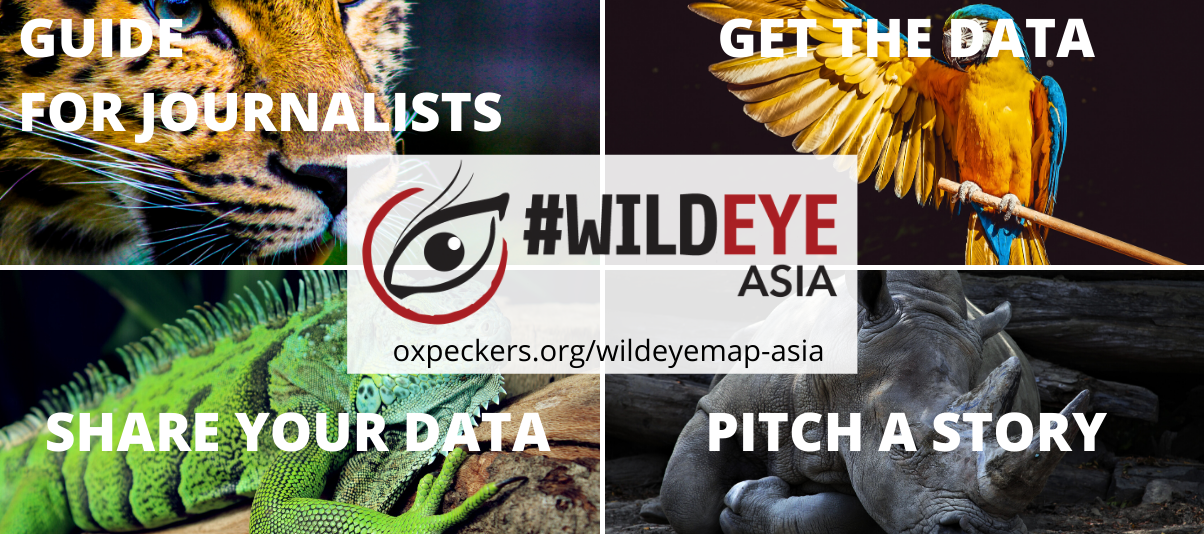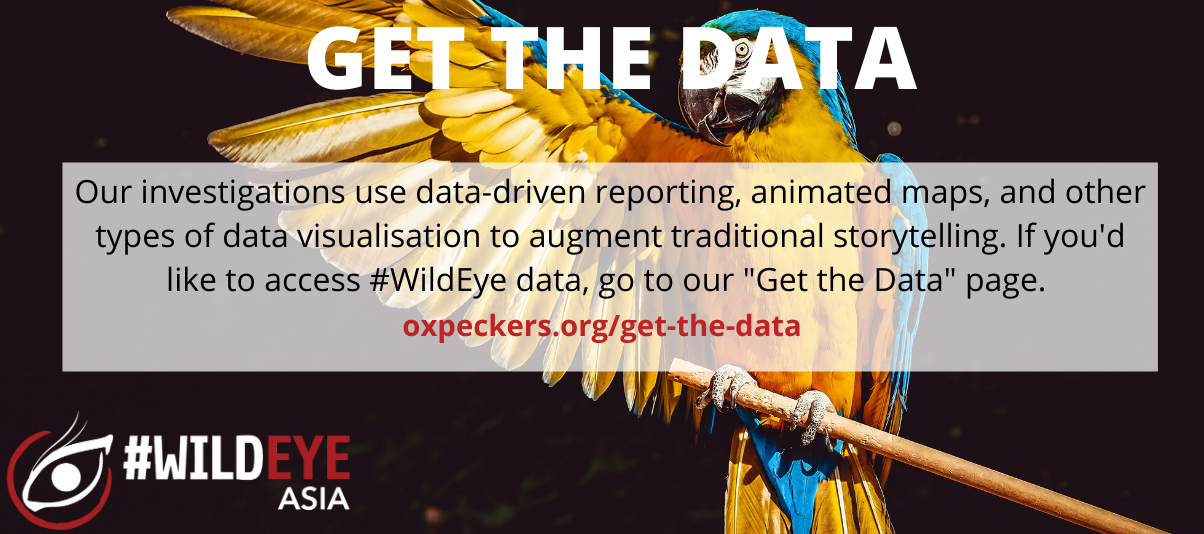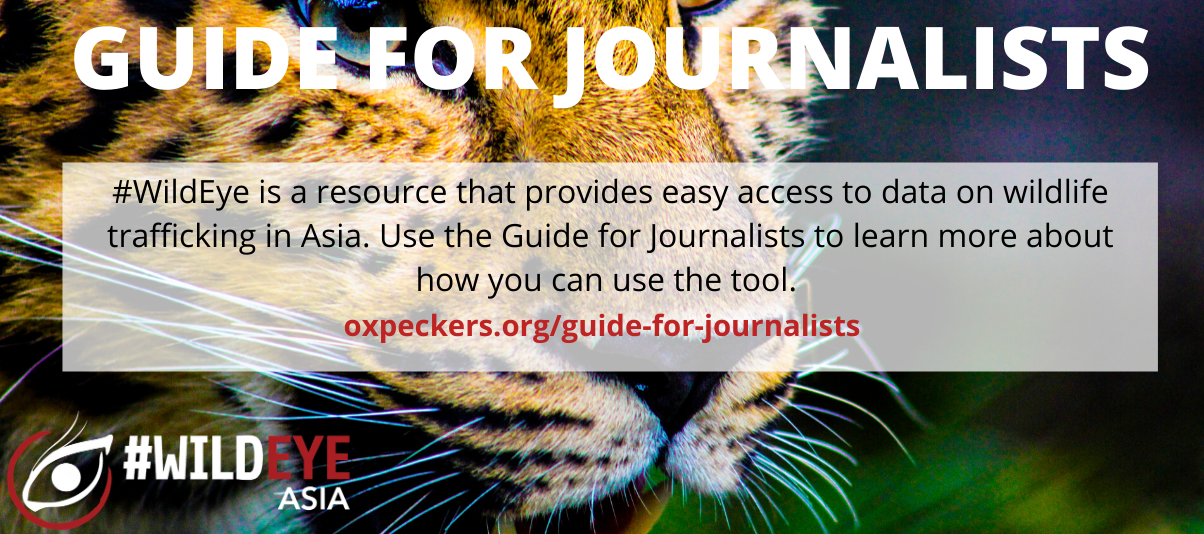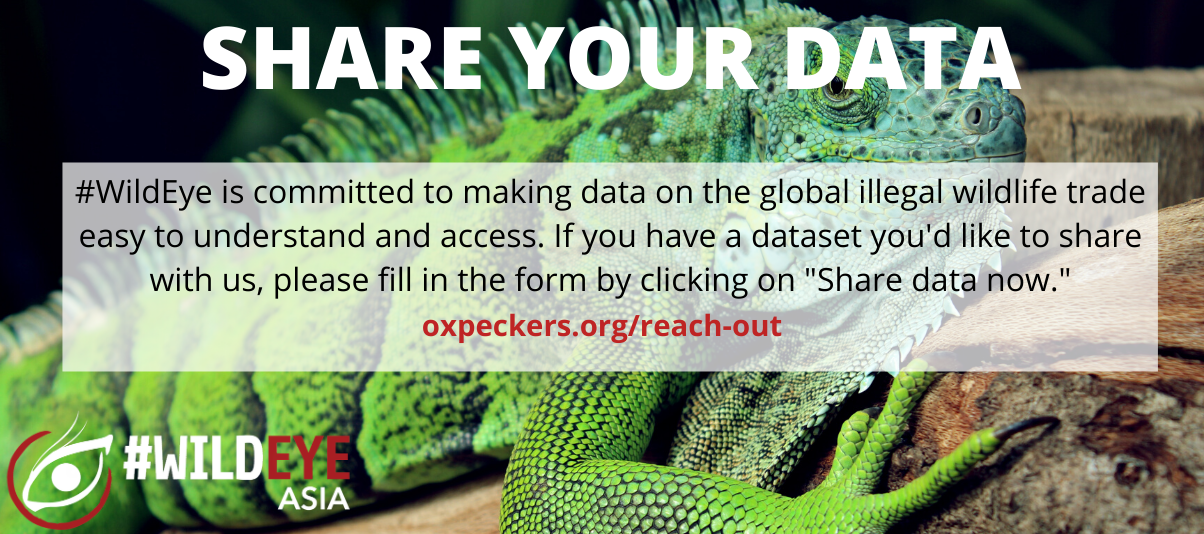
06 May New tool tracks Asia’s role in illegal wildlife trade
With global attention focused on wildlife trade in Asia, Oxpeckers introduces a new data journalism tool that investigates legal interventions
 Building on the success of our #WildEye project in Europe, Oxpeckers Investigative Environmental Journalism introduces #WildEye Asia, a resource that tracks and shares information on legal interventions against wildlife trafficking across Asia.
Building on the success of our #WildEye project in Europe, Oxpeckers Investigative Environmental Journalism introduces #WildEye Asia, a resource that tracks and shares information on legal interventions against wildlife trafficking across Asia.
Developed by journalists for journalists, it maps data on seizures, arrests, court cases and convictions. The platform also hosts a growing dossier of investigative reporting that either uses the data, or is otherwise related to wildlife crime in Asia.
In May 2020, Oxpeckers associates discussed the pressing need for investigative datajournalism in a webinar on Covid-19 and the Environmental Crisis.
What are Asia’s law enforcement agencies doing about illegal wildlife trade? In the Covid-19 era, this question is not only a concern for environmentalists focused on saving endangered species.
Until now, there has been no single place to access information easily on efforts to crack down on wildlife crime in Asia. #WildEye addresses this gap by tracking and sharing data on justice in action.
Our lead story demonstrates how the tool helps investigative journalists, and how investigative journalists can help build the data.
The article, Chinese courts treat pangolin offenders lightly by Bao Choy, an open data and investigative journalist from Hong Kong, drilled down into public records that show Chinese courts treated pangolin offenders lightly between December 2019 and April 2020 – despite the Covid-19 pandemic and recent studies that have suggested pangolins are the probable intermediary host of the coronavirus.
What does #WildEye do?
The idea behind these geojournalism tools is to aggregate publicly available data and make it easily accessible for use by journalists, policymakers and the general public.
There are currently two different versions of the #WildEye tool: #WildEye Europe, introduced in January 2019, tracks information on law enforcement interventions across greater Europe.
#WildEye Asia focuses on legal interventions across Asia, including Thailand, China, Indonesia, Vietnam, Hong Kong, Singapore, Philippines, Myanmar, Laos, Cambodia and Japan.
The maps are populated with icons containing information about a seizure, an arrest, a court case or a conviction – as per the legend at the top of the maps.
The default display on the maps is “All categories”. If you only want information about one category, click on that menu at the top of the map.
Click on any icon and a text box will pop up, providing detailed information about what products were seized, who was arrested, and how much they were fined, for example.
You can subscribe to alerts on specific cases, or areas that interest you, in order to receive updated information and track new developments. Use the buttons on the maps to subscribe, or unsubscribe. This way, you do not need to search manually for updated information, and can rely on #WildEye to do this for you.
There is a search function to help users filter information and find topics of interest. If you want to learn about illegal trade in birds, for instance, simply type “birds” in the search box and you’ll get results covering seizures, arrests, court cases and convictions involving that word.

How can journalists use the tool?
Journalists can use #WildEye to track specific data, patterns or trends for use in their investigations. At the click of a button #WildEye can show you where law enforcement efforts are concentrated in Asia, for instance, and whether this is leading to judicial certainty.
Why are there more seizures in some countries than others — is this due to more intense controls, or to the preference smugglers have for certain routes? Why do so few seizures result in prosecutions and (fewer still) convictions?
Journalists can use the data to identify cases on which to build new stories, through court records, or freedom of information requests. If you would like us to share the raw data with you, please see Get the Data.
Add data and stories
Journalists are encouraged to share data via the tools whenever they come across it. If you know of seizures, arrests, prosecutions or convictions that are not on #WildEye, please contact us here. Contributing to the consolidated database will help you keep track of information, for research and story purposes.
One of the goals of #WildEye is to build on our dossier of stories based on the tools’ data. The stories produced through the help of #WildEye data are featured on our map pages, on the Oxpeckers site and by the Earth Journalism Network. These investigations have also been published by a wide range of third-party media outlets.
Share story ideas with us here. And if you use #WildEye data in your investigations, please let us know so we can help share your stories. Your feedback will assist in refining #WildEye for use by other journalists.
• The #WildEye project was developed by Oxpeckers Investigative Environmental Journalism in partnership with Internews’ Earth Journalism Network.


